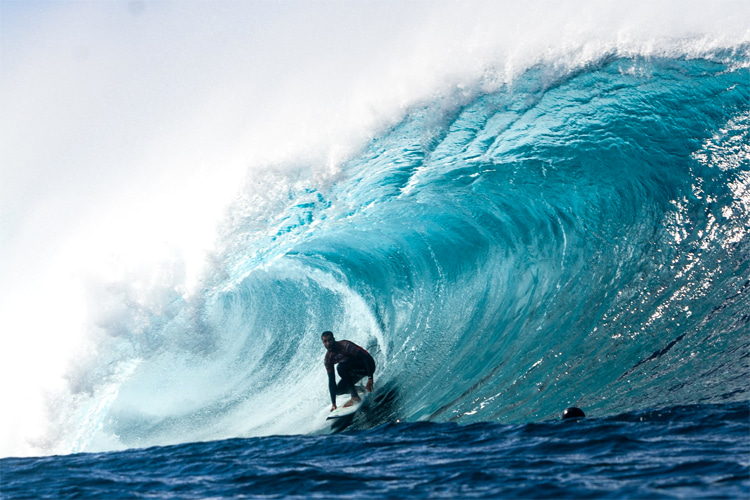With sunny skies, warm temperatures, and world-class waves, the Canary Islands are one of the Atlantic's finest surfing destinations. El Quemao is the queen wave of Lanzarote.
Located off the coast of West Africa and around 1,240 miles (2,000 kilometers) from Madrid, the Spanish archipelago of the Canary Islands is a volcanic work of Nature blessed by splendid conditions for wave and wind sports enthusiasts.
El Quemao is a natural wonder and one of the most underrated barreling waves on the planet.
Unlike its sister wave at El Frontón, which detonates in Gran Canaria, the La Santa treasure can be ridden by both surfers and bodyboarders.
If you have trouble imagining a firing barrel exploding down the line in Lanzarote, think of Oahu's Banzai Pipeline.
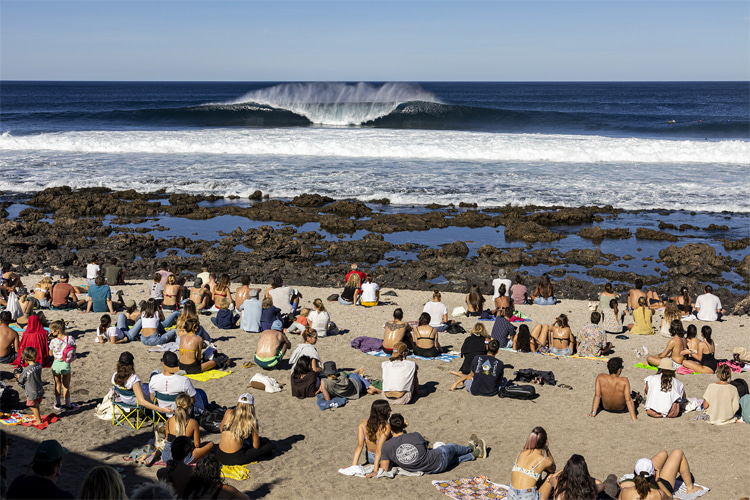
El Quemao: Fast, Hollow, and Furious
El Quemao has all the ingredients to be part of any elite surfing or bodyboarding world circuit.
The exposed left-hand reef break delivers spectacular racing walls of water for high-performance, top-to-bottom surf and powerful tubes for bodyboarders to display their bag of airs, el rollos, spins, and backflips.
The best time to surf El Quemao is from September to April, even though it breaks all year round on the northwest coast of Lanzarote.
It shines to life with head-high waves around six feet (1.8 meters) but can also hold its perfect shape when massive swells produce 20-foot walls of water.
The Spanish reef break needs E-SE wind combined with a solid N groundswell for the perfect conditions to align.
The mid-to-full tide will ensure enough water above the lava reef and minimize the chances of injuries.
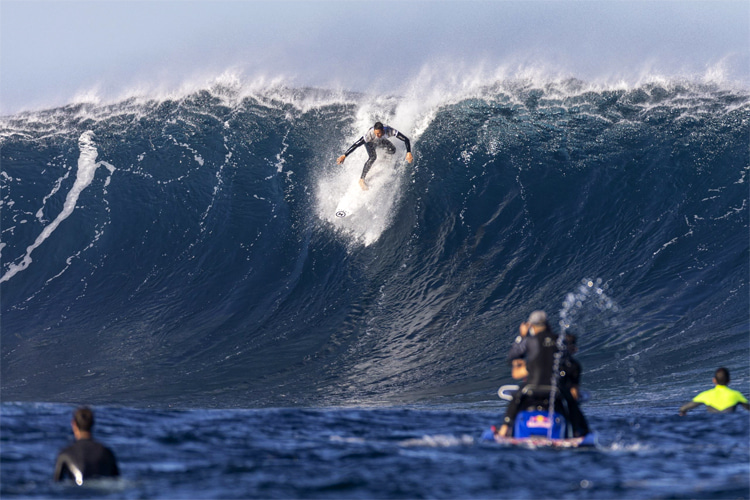
A Deadly Wave
El Quemao is a wave of consequences.
On January 1, 2009, Fuerteventura-based David Infante died on January 1, 2009, while surfing with a group of friends on La Santa's El Quemao.
The body of "El Fula," 32, was found unconscious with a cardiorespiratory arrest on the shore and showing signs of a head injury caused by hitting the rocks.
Although the emergency services tried to revive him, they could do nothing to save his life.
The tragedy shocked the local community.
As a result, The Quemao Class, a dual event in which surfers and bodyboarders battle for trophies, pays tribute to David Infante every year.
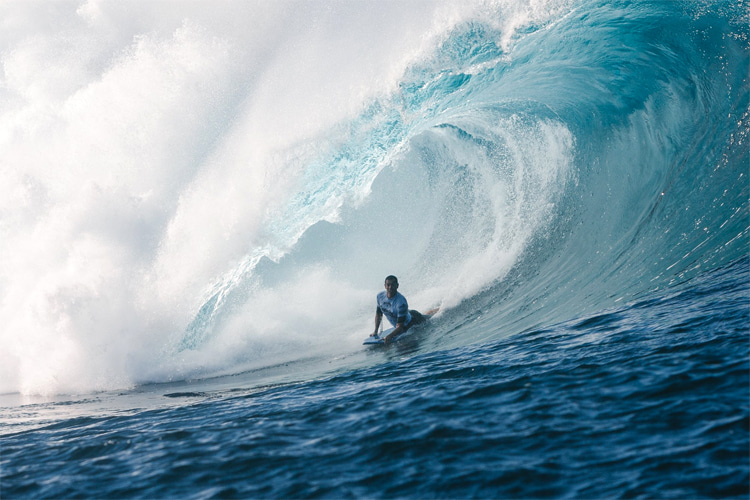
Taming the Fire
Lanzarote's ultimate surf spot, which explodes in front of the fishing village, attracts thousands of wave riders and curious tourists.
The take-off must be timed perfectly - it's steep and fast. Otherwise, you'll miss the optimal tube riding line and wipe out.
Surfing El Quemao on a dropping tide is extremely dangerous and should be avoided at all costs, despite the temptation to get spat out of the barrel in grand style.
The fast and deep La Santa dream wave is an advanced rider-only arena.
Although it's the left-hand pearl that made it famous, you can also find a relatively hollow, fast, and shorter right-hander, similar to Pipeline's Backdoor.
Access to the channel is made via the village's pier.
On epic days, the shallow lava reef break is packed with the best of the island's surfers and bodyboarders, and a locals-only atmosphere prevails.
On smaller days, the level of surfing required to tame El Quemao is still very high, so take caution and consider wearing a protective helmet.
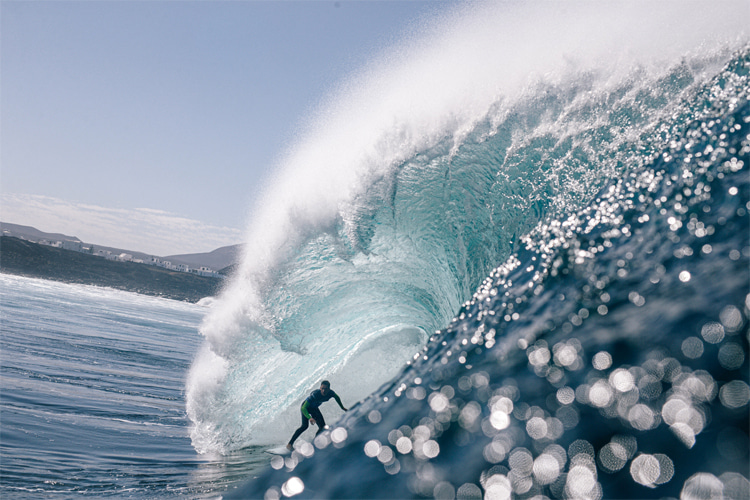
La Santa Waves
Just 500 yards away from Pipeline's Atlantic sister wave, you'll find La Santa Izquierda, a seriously thick left and right A-frame peak breaking over a slab.
The left-hand option is often longer and more exciting, even though you can get barreled on both waves.
The spot can hold a lot of wind and swell directions, but certainly not a crowd, as it is one of the most sought-after waves on Lanzarote.
La Santa Derecha, also known as Morro Negro, is a long right-hand point break with a couple of distinct sections that link up on the best days.
It gets hollow with E winds, and NW-N swells but also delivers large open faces for you to work on.
The spot handles size and some N wind quite well, even though W swells will section and generate sneaker wave sets.
It is often crowded, but the length of the wave can thin out the mix of tourists and locals. Watch out for slippery rocks, urchins, and rips, and beware of shallow spots on smaller days.
El Quemao, Canary Islands, Spain | ID and X-Ray
Location: La Santa, Tinajo, Lanzarote
Type of Wave: Left-Hand Lava Reef Break
Length: Up to 55 yards (55 meters)
Best Swell Direction: N-NW
Best Wave Size: 6-20 Feet
Best Wind Direction: S, SE
Best Tide: Mid-to-High Tide
Best Time to Surf: Fall/Winter (September-April)
Skill Level: Advanced to Professional
Best Board: Shortboard and Bodyboard
Crowd: Mostly Crowded
Water Quality: Good
Hazards: Reef and Localism
Bottom: Lava Reef
Water Temperature: 64-73 °F (18-23 °C)
Getting There: Paddle
